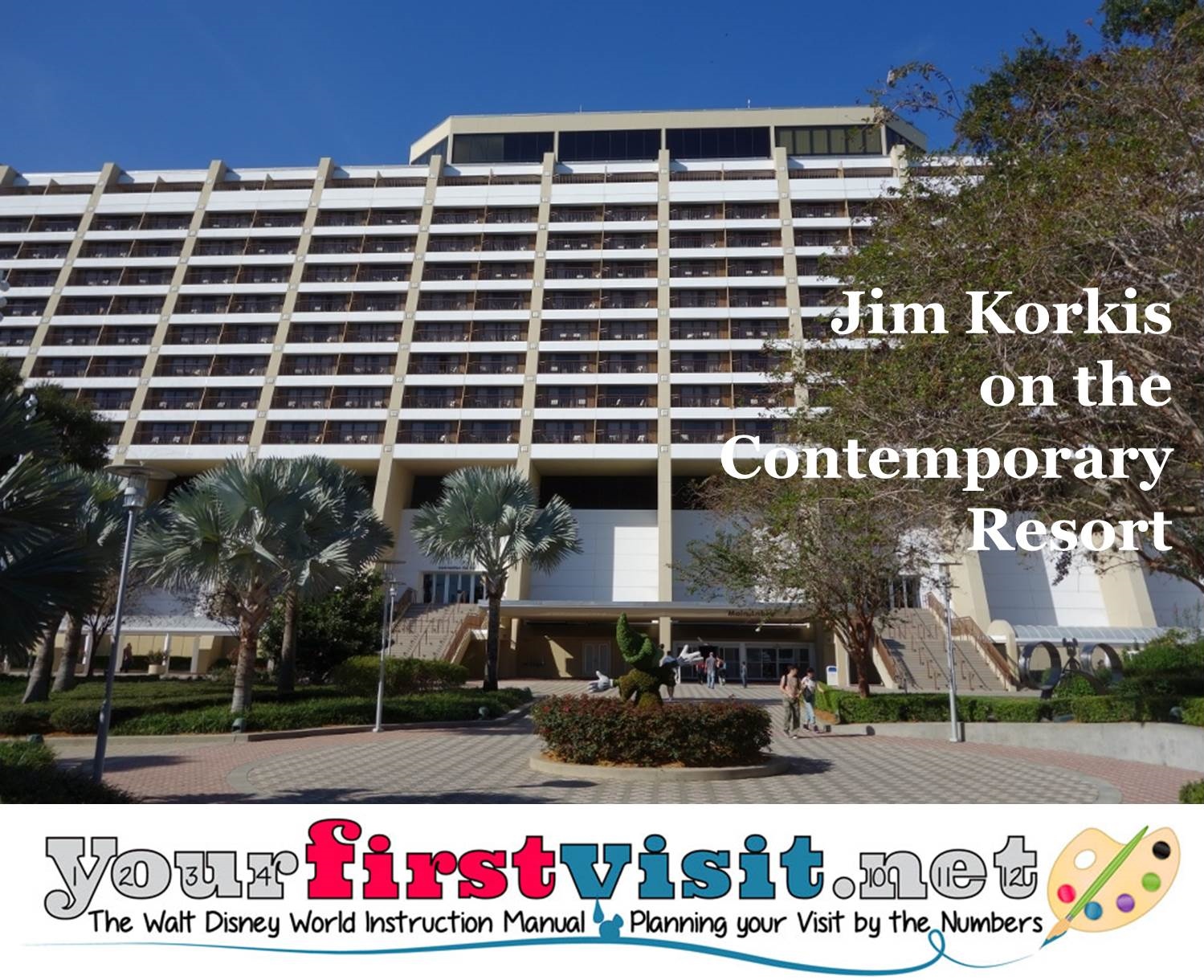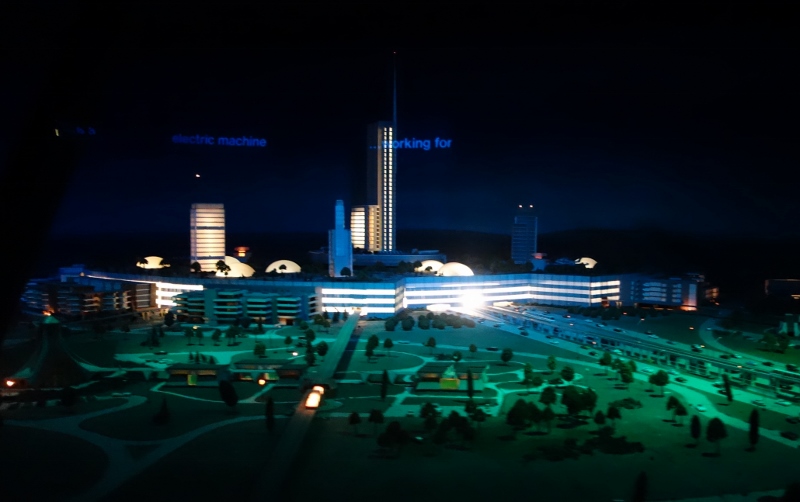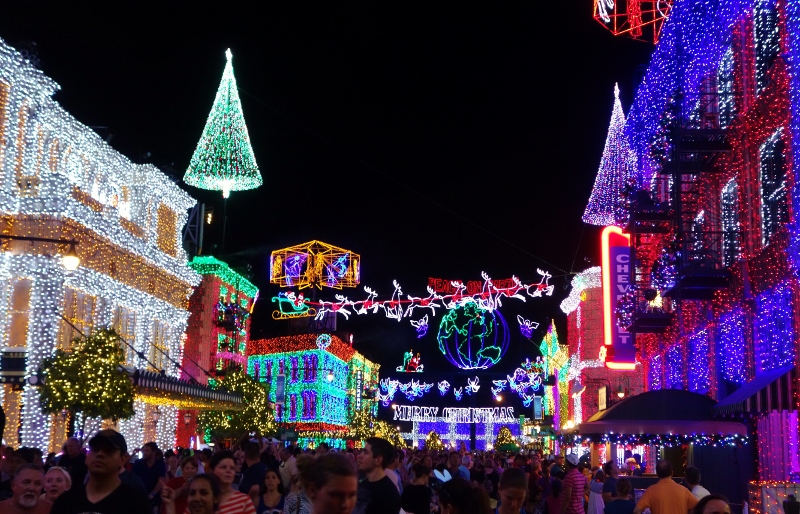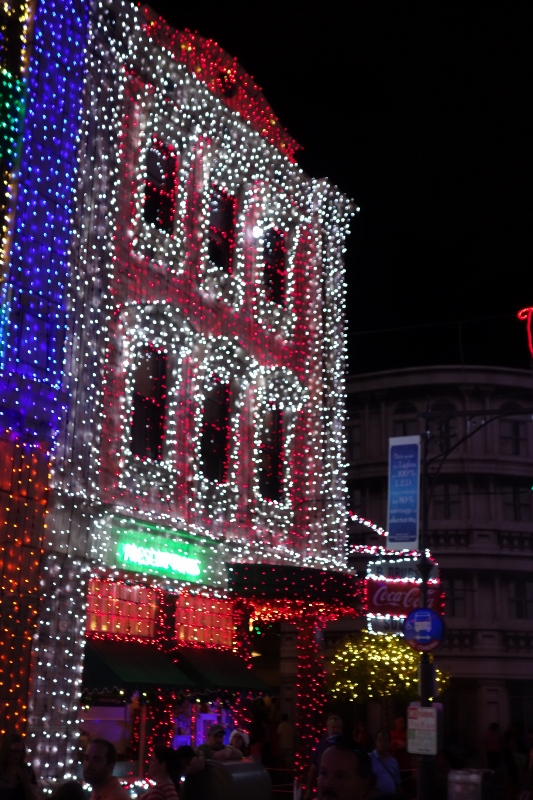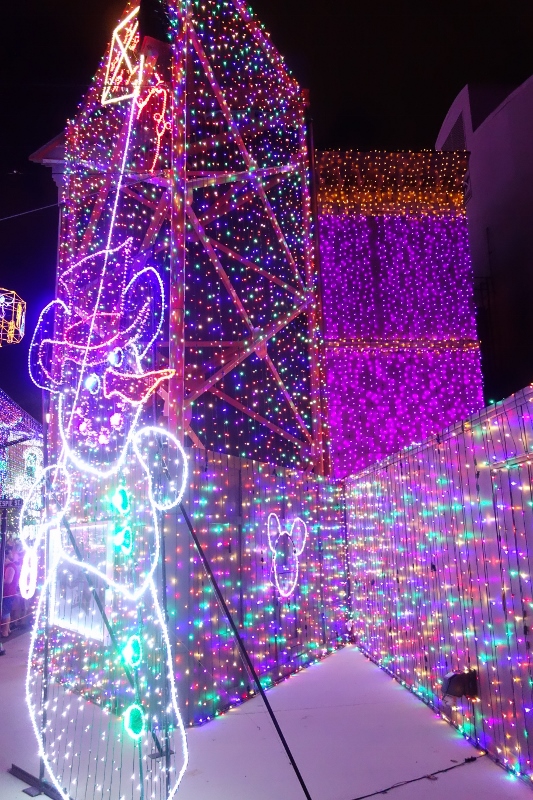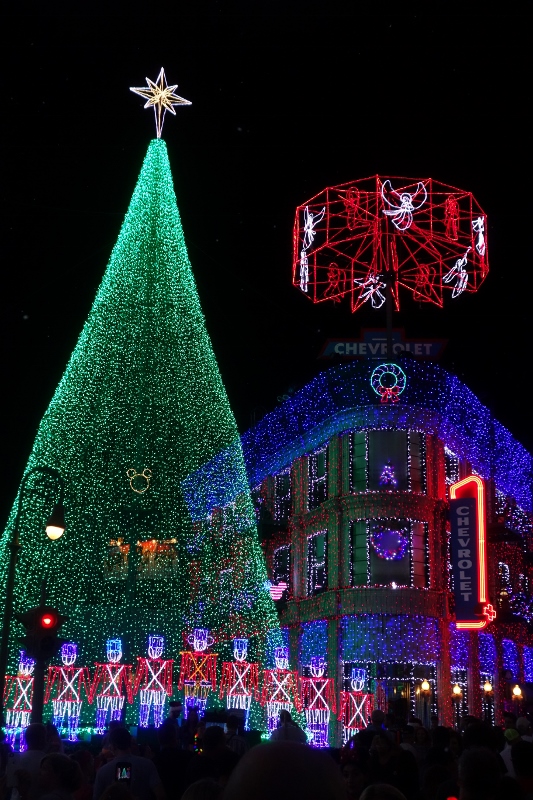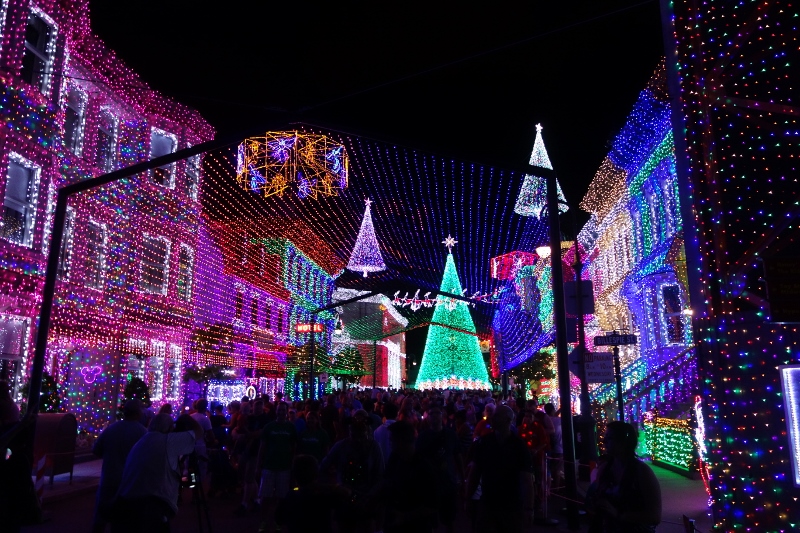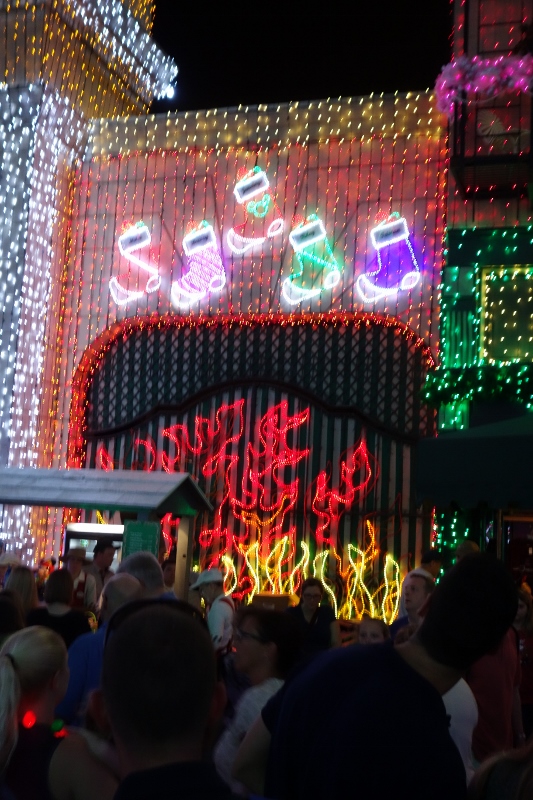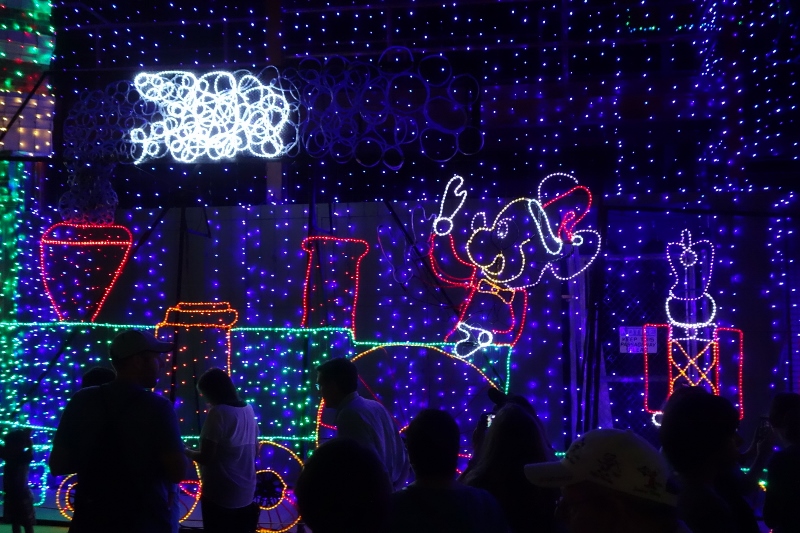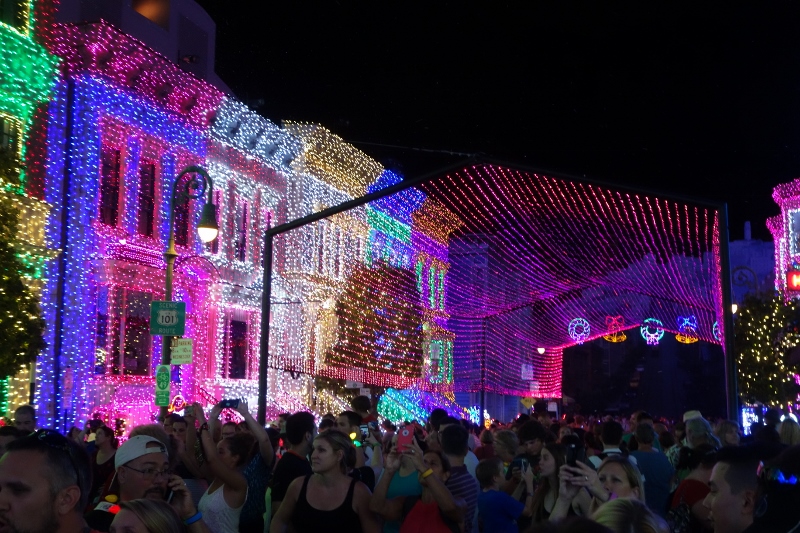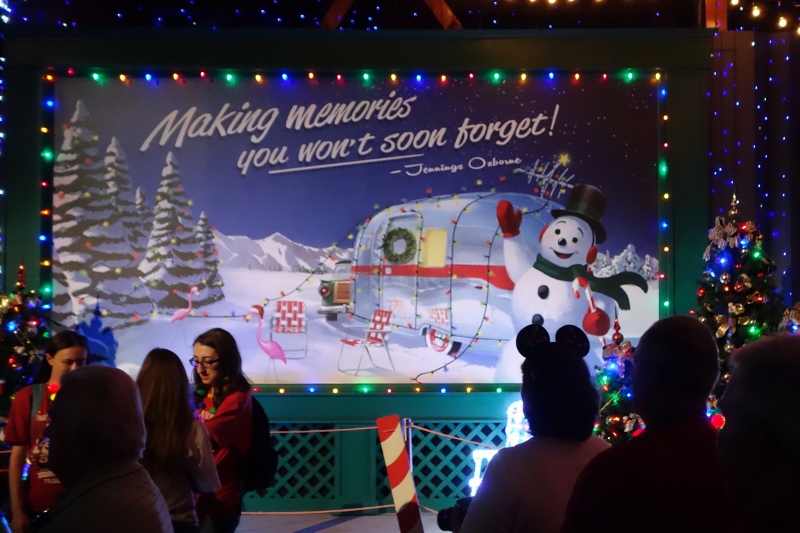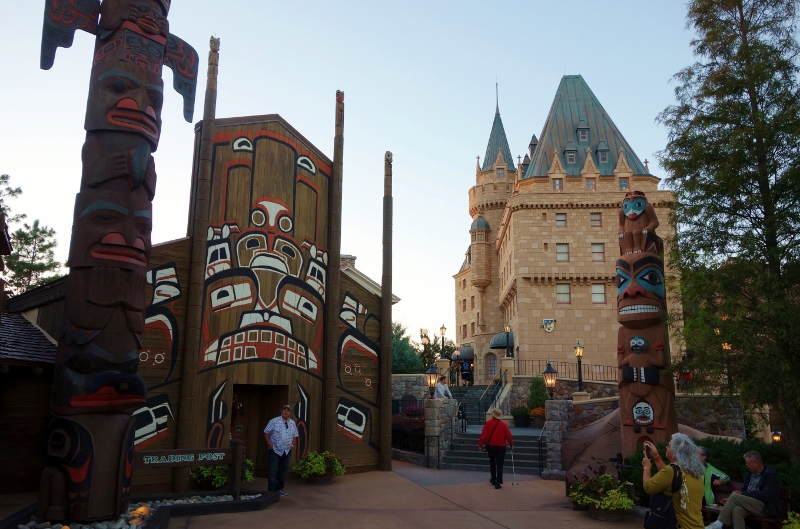Category — A Friday Visit with Jim Korkis
A Friday Visit with Jim Korkis: Disney’s Contemporary Resort
Welcome back to Fridays with Jim Korkis! Jim, the dean of Disney historians and author of Jim’s Gems in The easy Guide, writes about Walt Disney World history every Friday on yourfirstvisit.net.
THE NOT-SO-REMOVABLE ROOOMS AT DISNEY’S CONTEMPORARY RESORT
By Jim Korkis
A decades-long Disney urban myth still believed by many WDW guests and even cast memberS is that the Contemporary Resort was designed so that the individual rooms were created like dresser drawers in a way they could be easily slid into the framework and then later unplugged to refurnish the rooms with improvements. Not so–at least the “unplugged” part.
The final design for the Contemporary Resort was a collaboration between Walt Disney Productions, the United States Steel Corporation, and Los Angeles architect Welton Becket, a long-time friend of Walt Disney. There was never any documentation or publicity from any of these organizations about removable rooms.
Walt’s original concept for the Epcot part of his “Florida Project” was that the 20,000 residents originally planned for the “Experimental Prototype Community of Tomorrow” wouldn’t own their apartments and houses.
This would allow various companies from American industry to come in every five or ten years and re-do the entire kitchen or the wiring, so that these residences would feature the latest technology to showcase to visitors.
This idea may have been the beginning of the urban myth of the replaceable rooms at the Contemporary.
Actually, the exterior design of the Contemporary was inspired by a building in Walt’s original model for Epcot that would have been a shopping center between the center of the city and the green belt.
Walt was always fascinated by new construction methods, even as far back as the Monsanto House of the Future at Disneyland made from nearly indestructible plastic.
United States Steel Corporation, through its then newly-formed subsidiary company, U.S. Steel Realty Development, was eager to use and publicize a unique construction method called “unitized modular construction”.
For the Contemporary, they built a superstructure of thirteen steel-trussed A-frames resembling a skeletal honeycomb. Into the honeycomb, they fitted the individual guest rooms manufactured at a 150,000-square-foot floor-space building just a few miles away from the resort.
The rooms were formed on an assembly line, much like automobiles, at the rate of about forty a week. As they passed through each station on the way to completion, the electrical, mechanical and plumbing facilities were added to the room.
Each room was nine feet high, fifteen feet wide and about thirty feet long and had pre-installed air conditioning units, piping, lighting and even mirrors and bath fixtures in the bathrooms. Then, each nine-ton room was placed on trucks and hauled to the Contemporary, where each room was lifted into place by massive cranes and fitted into the steel frame.
They often didn’t fit into those exacting openings on the first try, and because of the structure, they had to alternate installing rooms on the opposite sides to prevent the framework from becoming off balance and tipping over.
Once the rooms were in place and hooked up, they “settled” thanks to movement in the building, gravity and other factors, so they sank just below the original slot. To be removed, among many other challenges, they would have to be lifted up before being pulled out.
They were permanently enclosed in the structure by exterior walls and balconies. When it’s time to replace the wallpaper in the rooms, it makes much more sense to send in a few wallpaper hangers than to remove the exterior walls of the Contemporary, lease an expensive crane, bring in a highly skilled crane crew, disconnect all utilities including sewer connections, carefully remove the rooms (each time leaving a hole in the side of the building, and alternating sides), swap out the room, reconnect everything, and rebuild the exterior walls and balconies.
* * * * *
Thanks, Jim. There’s more on Disney’s Contemporary Resort here.
Come back next Friday for even more from Jim Korkis!
In the meantime, check out his books, including Secret Stories of Walt Disney World: Things You Never You Never Knew, which reprints much material first written for this site, and The Vault of Walt: Volume 4, and his contributions to The easy Guide to Your First Walt Disney World Visit, all published by Theme Park Press.
Follow yourfirstvisit.net on Facebook or Google+ or Twitter or Pinterest!!
December 4, 2015 No Comments
A Friday Visit with Jim Korkis: Secrets of the Osborne Spectacle of Dancing Lights
Welcome back to Fridays with Jim Korkis! Even though it’s not so utterly Friday today…Jim, the dean of Disney historians and author of Jim’s Gems in The easy Guide, writes about Walt Disney World history every Friday on yourfirstvisit.net.
SECRETS OF THE OSBORNE SPECTACLE OF DANCING LIGHTS
By Jim Korkis

Disney has announced that this year is the final appearance of this breath-taking experience.
Over the years, the show has undergone several changes but here are a few items that guests may have missed over the years.
When the four 18-wheel Mayflower Moving Vans arrived at Walt Disney World on November 4,1995, and the lights were unloaded, Show Director John Phelan discovered that there was a figure of a cat with an arched back outlined in purple. Time was of the essence since the display was announced as opening in just three weeks on November 24.
Phelan contacted Jennings Osborne to try to identify where it fit into the overall Christmas display and if it were perhaps a tribute to an Osborne pet. An amused Jennings replied that it was actually part of his Halloween lighting and he had shipped it by accident. Osborne had three huge backyard storage sheds filled with his holiday lights so it was easy to make a mistake.
Phelan kept the cat and had it re-lit in a holiday style and added to the display. Each year, the Walt Disney World lighting crew hides it somewhere in the display without letting Phelan know its location, thus making him go and find it. It is in a different place each year. Phelan has since moved on to duties at a competing Orlando park but still returns to try to find the cat.
By the way, there is an homage to the University of Arkansas Razorbacks football team, with a red razorback hog hidden among the lights since Jennings was a huge Razorbacks fan including hosting free barbecues at Razorback games.
In 2006, approximately four hundred dimmer relay and control switches were added to the display allowing the lights to be choreographed to a musical score. The holiday event now consisted of more than five million lights and was officially renamed the Osborne Family Spectacle of Dancing Lights.
Disney was not the first to use dancing lights but its display was the largest. Disney continued to update and add more and more lights each year.
The nativity scene saw a little controversy and was eventually moved to the Italian pavilion at Epcot for the holidays.
One year, special glasses were given away where the guests could see images of angels in the lights. Again, because of a little controversy regarding religious aspects, those glasses were redone the next year so guests could see snowflakes instead. The glasses also worked on your own Christmas tree at home.
The lights for display have all been converted to energy-efficient LED lights beginning in 2011 making the lights not only environmentally friendly, less expensive in terms of electricity but also brighter. Scenes and music from the ABC holiday show “Prep & Landing” have also been added.
The infamous “leg lamp” from the popular movie A Christmas Story is in one of the windows. Glow With The Show Mickey ears were introduced in 2013. Santa Goofy has been part of the experience for several years now.
Of course, there are dozens of hidden Mickeys as well from a toy soldier with mouse ears on his hat, to a marking spot on the rear end of a Dalmatian puppy to the more traditional three-circled images in a variety of colors.
By the way, the Mickey Mouse driving a train was part of the original display in Arkansas.
The radio station WJBO that broadcasts music throughout the night is a tribute to William Jennings Osborne.
That red canopy of lights used to adorn the outdoor driveway of the Osborne home. The canopy was lower when it was on Residential Street because Osborne wanted people to feel immersed in the lights.
“I like creating memories that people won’t soon forget,” Jennings Osborne once said. “I want the people to feel like they are inside the lights, looking out at the world.”
* * * * *
Thanks, Jim. Jim has written more on the Osborne Lights here. I’m hoping to see them again on our December visit. The end of an era…
Come back next Friday for even more from Jim Korkis!
In the meantime, check out his books, including Secret Stories of Walt Disney World: Things You Never You Never Knew, which reprints much material first written for this site, and The Vault of Walt: Volume 4, and his contributions to The easy Guide to Your First Walt Disney World Visit, all published by Theme Park Press.
Follow yourfirstvisit.net on Facebook or Google+ or Twitter or Pinterest!!
November 30, 2015 No Comments
A Friday Visit With Jim Korkis: Dave Smith and “Walt Wouldn’t Do That!”
Welcome back to Fridays with Jim Korkis! Jim, the dean of Disney historians and author of Jim’s Gems in The easy Guide, writes about Walt Disney World history every Friday on yourfirstvisit.net.
AN INTERVIEW WITH DAVE SMITH
By Jim Korkis
Dave Smith became a Disney Company employee on June 22, 1970 and was the company’s first archivist and the only person in his department at the time. His first assignment was to document all the items in Walt Disney’s offices.
In 2007, he was made a Disney Legend. He retired in October 2010 over four decades after first being hired but continues to work for the Disney Company as a consultant with the title Chief Archivist Emeritus.
I have interviewed Dave many times. The following is an excerpt from one I did with him on March 16, 2005 at the Walt Disney Story Theater in Main Street Exposition Hall at the Magic Kingdom in Florida. It was done on stage in the afternoon in front of more than three hundred eager cast members.
Dave Smith: “I think that Epcot was an idea of a visionary. Epcot was something that Walt Disney came up with just a couple of months before he died so there really wasn’t the opportunity there for people to think about his ideas too much, to discuss his ideas too much and then he was gone. And, the idea sort of died for a while with him because nobody wanted to continue with this because that was Walt’s idea and I don’t think anybody else really had a lot of confidence in the idea of Epcot.
“Roy O. Disney who took over the company at that time said, “We know how to build a Magic Kingdom. We’ve got all this land out there in Florida. It’s got to start making some money for us so let’s build our Magic Kingdom first. Let some money start coming in and then we’ll think about Walt’s ideas for Epcot.”
“So, I think if there had been a lot of discussion in 1966 about Epcot, you found a lot of naysayers in the company saying, we’re going to be wasting our money. Of course, when we built Epcot you had a lot of people outside the company saying that too because we spent a billion dollars to build this amusement park and nobody had ever done anything like that before!
“A lot of people have complained about Disney bringing outside elements into its theme parks. As the example, Star Tours, Captain Eo, things like this. They think, “Walt built a Disney park! This was a Disney park and he didn’t allow all these outside things in!”
“But look at Disneyland in 1955. What part of that park was Disney? Fantasyland! That was about it. I mean, he’d made some true-life adventures and so, yeah, let’s have an Adventureland. But, the Jungle Cruise wasn’t based on a Disney film; that was based on The African Queen with Humphrey Bogart. I mean, the boats are pretty much the boats from The African Queen.
“Frontierland. How much did Disney do on the subject of Frontierland before the park opened? We’d done three Davy Crockett shows on television but that’s about it. So, and Davy Crockett wasn’t very much of a part of Frontierland when it opened. And a year later we expanded Frontierland and bullt Tom Sawyer’s Island. How many movies did we make about Tom Sawyer at that time? None. So, that didn’t have Disney connotations either.
“Look at Tomorrowland. We’d never done anything about the world of the future until our television show started and this was while he was building Disneyland and Walt thought well, we better do some things about Tomorrowland. And so he did a few space shows.
“And, Main Street! What’s Disney about Main Street? I mean, people say that’s based on Walt’s childhood. Well, maybe partially but it’s probably more based on the childhood of Imagineer Harper Goff, who designed Main Street and based it on his hometown of Fort Collins, Colorado, not Marceline, Missouri. So, there are a lot of myths there and people don’t really think this out before they start complaining about what would Walt have done. Well, Walt did that!”
* * * * *
Thanks, Jim. And come back next Friday for even more from Jim Korkis!
In the meantime, check out his books, including The Vault of Walt, Who’s Afraid of the Song of the South?, and The Book of Mouse
, and his contributions to The easy Guide to Your First Walt Disney World Visit, all published by Theme Park Press.
Follow yourfirstvisit.net on Facebook or Google+ or Twitter or Pinterest!!
November 20, 2015 No Comments
A Friday Visit With Jim Korkis: Why Disney World in Not in St. Louis
Welcome back to Fridays with Jim Korkis! Jim, the dean of Disney historians and author of Jim’s Gems in The easy Guide, writes about Walt Disney World history every Friday on yourfirstvisit.net.
DISNEY WORLD AND ST. LOUIS
By Jim Korkis
During 1963 and 1964, Walt Disney was in discussions with the city of St. Louis to build a five story building covering over two city blocks that would house an indoor entertainment complex called Riverfront Square.
It would include a Pirate’s Lair and Blue Bayou boat ride (later combined at Disneyland into Pirates of the Caribbean), a Haunted House, a Circarama 360 Theater, a Mike Fink ride, a “Lewis and Clark Adventure Ride” and even a Mississippi steamboat attraction.

Walt had insisted that no alcohol be served in the indoor venue because he wanted it to be family friendly, and the absence of alcohol would keep out what Walt referred to as “rowdies” who would disrupt the experience. This was the same philosophy he had at Disneyland.
Admiral Joe Fowler, who was in charge of construction for both Disneyland and Walt Disney World, was 82 years old in 1988 and living in his Bay Hill home in Florida when he shared this story with me by phone:
“Well, it seems almost from the day Disneyland was opened people were after Walt to open another. If not exactly like the one in California, then something else, but hurry up and build something. Walt resisted this at first, but then, after our New York World’s Fair exhibits were in place and proving a spectacular success, he began to look around the country.
“I think it was in early 1964 that after several visits, Walt gave the green light for some preliminary theme park work to start in St. Louis. We were invited to this fancy civic banquet, where there were lots of enthusiastic bankers, chamber of commerce types, the mayor and his people, that kind of thing.
“At some point well into the dinner, August Busch, owner of Anheuser-Busch brewery and a powerful man in St. Louis, stood up, when he should have sat down and said something to the effect of ‘Any man who would build something like this, and then not serve beer and liquor inside, ought to have his head examined’.
“Now Walt, when in public, didn’t show much emotion if he got angry. He would just remain quiet where usually he was quite talkative. But when you saw his left eyebrow shoot up, you knew there was a serious state of affairs. Well, when Walt heard that Busch considered him crazy for not selling alcohol in the thing, his eyebrow arched straight up.
“Once we were all on the company plane and headed back to California, Walt gathered us for a meeting and said, ‘All right, forget about St. Louis’. Nobody had to ask why. The bankers called, all upset that we had pulled out. Some even visited us later, but it was to no avail. After that Walt said maybe we should concentrate more on Florida.
“When we picked up the bulk of 27,000 acres in Florida, Walt was delighted but not overwhelmed or over the moon. If he had had his way, we would have bought 50,000 acres!”
Interestingly, documentation has been uncovered in recent years that Walt did not consider the St. Louis project as an alternative to his interest in building something in Florida. He truly intended to do both things simultaneously.
The biggest issue was not actually the selling of alcohol, but rather that St. Louis felt that Disney was going to pay for the entire thing itself, whereas Walt felt that St. Louis was going to finance it and then later be reimbursed from the net profits of the operation but that the property would have been owned solely by Disney.
In any case, on July 13, 1965, St. Louis officials and Disney executives jointly announced that the project would not be built. Four months later, in November 1965, Disney made a public announcement of the plans to build in Florida.
* * * * *
Thanks, Jim. And come back next Friday for even more from Jim Korkis!
In the meantime, check out his books, including The Vault of Walt, Who’s Afraid of the Song of the South?, and The Book of Mouse
, and his contributions to The easy Guide to Your First Walt Disney World Visit, all published by Theme Park Press.
Follow yourfirstvisit.net on Facebook or Google+ or Twitter or Pinterest!!
November 13, 2015 No Comments
A Friday Visit With Jim Korkis: Why Did Jennings Osborne Have So Many Christmas Lights?
Welcome back to Fridays with Jim Korkis! Jim, the dean of Disney historians and author of Jim’s Gems in The easy Guide, writes about Walt Disney World history every Friday on yourfirstvisit.net.
JENNING OSBORNE’S LIGHTS
By Jim Korkis
Sadly, this holiday season is the last for the Osborne Spectacle of Dancing Lights at Disney Hollywood Studios. There is always the hope that Disney might relocate the beloved lighting display somewhere else.
William Jennings Osborne, who preferred being called Jennings, was born in 1943. With his loving wife, Mitzi, they founded the Arkansas Research Medical Testing Center in Little Rock, Arkansas in 1968. With the success of the business, the couple bought a large estate in the middle of town.
In 1980, they had a daughter named Allison Brianne who went by the nickname Breezy from her middle name, even as she grew into adulthood. Her father, as might be imagined, was extremely busy with his business and so was not always around. When Breezy was six years old in 1986, he asked her what she wanted for Christmas expecting some type of popular toy on maybe even a pony.
Breezy replied that she wanted to spend time together with her often absent dad hanging lights on the outside of the house for the holidays. Jennings realized that he was missing the most important part of his life, spending time with his young daughter. That Christmas, Jennings extravagantly decorated the outside of the house with over a thousand Christmas lights to the joy of the entire family.
Every year after that, it became a tradition and Jennings kept adding more and more lights. However, Jennings home was located on one of the busiest streets in Little Rock and as the fame of this display spread, it resulted in severe traffic problems as visitors clogged the street to experience the illuminated spectacle.
When neighbors complained, Jennings bought the houses on either side of him and decorated them as well.
The display grew to millions of lights and in 1994 six neighbors filed a lawsuit with the county court that they won which Jennings appealed to the state Supreme Court and lost as well. Finally, Jennings appealed to the United States Supreme Court that was denied and he was ordered to no longer operate the magnificent display.
“I do this to make people happy,” Jennings told the New York Times newspaper in December 1994 to try to rally support. “It just makes me so sad that a few people could ruin something that so many enjoy. Every day is Christmas to me and I want to take everybody along.”
Walt Disney World Executive Vice President Bruce Laval saw the report on CNN and assigned Show Director John Phelan to contact Jennings in the hopes of having an annual Christmas event at Disney’s Hollywood Studios to match the ones offered at the Magic Kingdom and Epcot.
Jennings and his family were huge Disney fans and an arrangement was made. Jennings never received any money for the use of his lights. His family would usually come down to Walt Disney World for about a week during the end of December and be put up as Disney’s treat at the Grand Floridian to visit the parks. The family would come over one night to Disney MGM Studios where a special ceremony was held for Jennings and his daughter Breezy to turn on the lights that evening.
Jennings passed away from complications of heart surgery at the age of 67 in July 2011.
Even though Jennings was ordered to remove his massive light display on his home, he did continue to decorate the outside of his houses in a more modest fashion until his death. He and Breezy still hung some of the decorations themselves.
* * * * *
Thanks, Jim. There’s more on the Osborne Lights here. I’m hoping to see them this weekend, then agian on our December visit. The end of an era…
Come back next Friday for even more from Jim Korkis!
In the meantime, check out his books, including The Vault of Walt, Who’s Afraid of the Song of the South?, and The Book of Mouse
, and his contributions to The easy Guide to Your First Walt Disney World Visit, all published by Theme Park Press.
Follow yourfirstvisit.net on Facebook or Google+ or Twitter or Pinterest!!
November 6, 2015 1 Comment
A Friday Visit With Jim Korkis: Totem Poles at Disney World
Welcome back to Fridays with Jim Korkis! Jim, the dean of Disney historians and author of Jim’s Gems in The easy Guide, writes about Walt Disney World history every Friday on yourfirstvisit.net.
TOTEM POLES AT DISNEY WORLD
By Jim Korkis
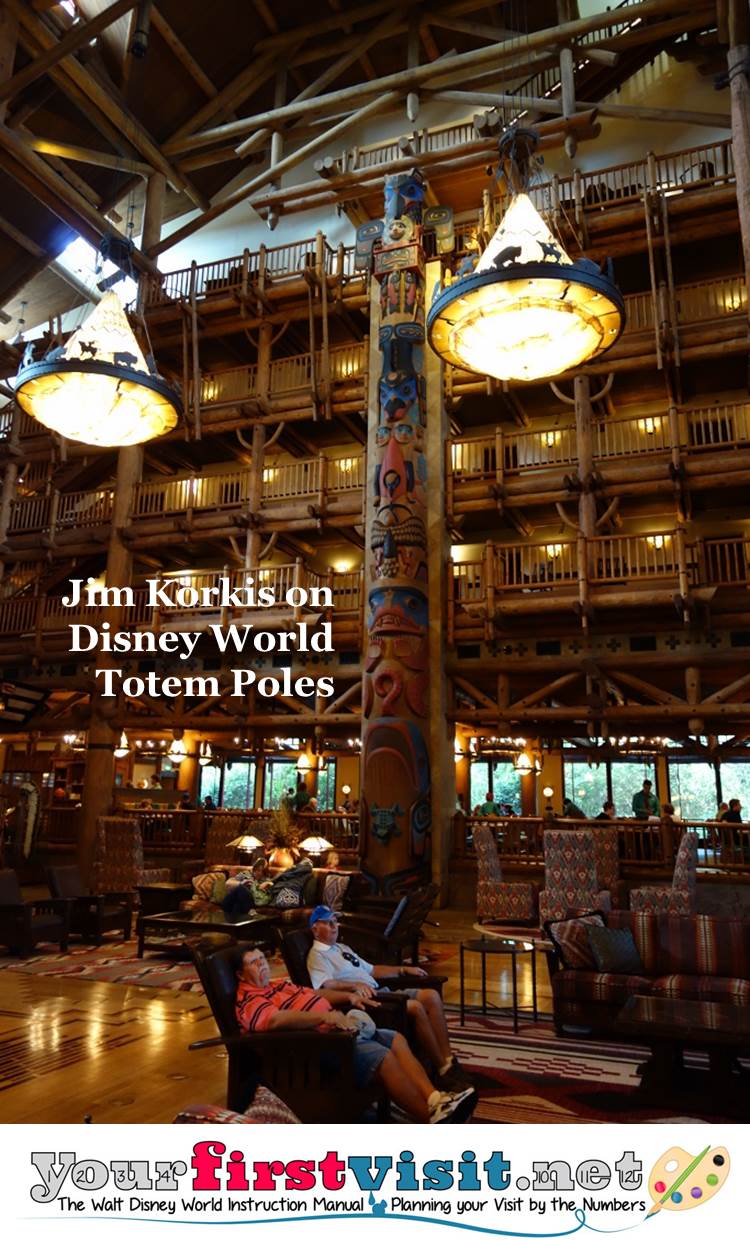
DUANE PASCO AND THE WILDERNESS LODGE
In 1994, the Disney Company hired Duane Pasco to carve the two 55-foot-tall totem poles for the lobby of the Wilderness Lodge Resort.
Though not a descendant of Pacific Northwest Indians, Pasco is considered one of the most adept among the handful of Canadian and American master carvers working today doing such work.
“These totem poles measure 3-feet wide at the top and 5-feet wide at the bottom and each is constructed of two 27-foot sections spliced together,” Pasco said. “The choice of characters and their placement were the choice of Disney World’s consultants.”
“I made very detailed drawings for this project because there were to be three assistants helping me: Pat Huggins, Loren White, and Scott Jensen,” he said. “I drew front, side, three-quarter views and lots of cross sections. In this way the client, the contractor and all the carvers can see exactly what the end product should look like.”
“The goal in designing the totem poles was to use legend and lore that was common among many tribes of the Northwest Coast but not necessarily specific to any one tribe,” wrote Pasco’s wife, Katie.
“This was easy to accomplish because the figures and the stories they represent remain fairly consistent. Characters on the Disney poles are pan-coastal in nature, with a particular attempt to portray figures not associated with inherited stories or family crests.”
It took six months to complete the two poles.
Pasco and his assistants began cutting away material with chainsaws. For finer details they used adzes, knives and other traditional carving tools.
The poles are made from four old-growth red cedars each about five feet in diameter at the base. The big cedars had to be hollowed out and there was considerable rot inside that had to be removed. Pasco reinforced the centers by splicing in new wood.
After the poles were carved, they were finished with Thompson’s Water Seal and then painted. The installation, which took place January 1994, took five days. The poles are flanked by stone walls and tied to steel I-beams.
DAVID BOXLEY AND CANADA AT EPCOT
In 1998, the Disney Company employed Tsimshian artist David Boxley from Alaska, noted for his decades-long creation of totem poles, to carve an authentic 30-foot totem pole for the Canada Pavilion at Epcot.
During the carving process, the log was laid on its side on a raised platform in front of the pavilion, where Boxley worked and interacted with the guests until it was erected next the Trading Post on April 1998.
This beautiful totem pole tells the tale from the Pacific Northwest Indians of Raven and Sky Chief.
When the Trickster Raven came to earth, the people lived in the dark without shadows and without the sun, moon, or stars. Raven began a search for light. He noticed Sky Chief kept a bright light in his home hidden away in a box.
Raven transformed himself into a pine needle that floats into a stream just as the Sky Chief’s daughter is taking a drink. She unsuspectingly swallows that needle and Raven becomes a baby in her stomach and is born to the delight of Sky Chief.
Sky Chief brings out the box to show his “grandson” the golden ball of light. Raven grabs the shiny ball, turns back into his true form and flies up into the sky where he tosses the light so all people can enjoy the sun, the moon and the stars.
I suspect most guests are more eager to locate the two small green Hidden Mickeys under the bending elbow near the top of the pole.
* * * * *
Thanks, Jim.
Come back next Friday for even more from Jim Korkis!
In the meantime, check out his books, including The Vault of Walt, Who’s Afraid of the Song of the South?, and The Book of Mouse
, and his contributions to The easy Guide to Your First Walt Disney World Visit, all published by Theme Park Press.
Follow yourfirstvisit.net on Facebook or Google+ or Twitter or Pinterest!!
October 30, 2015 1 Comment

